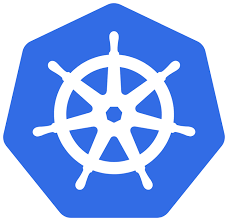To fix the Kubernetes Error: “Timed Out Waiting for the Condition”, read our latest blog. At Bobcares, with our Kubernetes Support, we can handle your issues.
Overview
- Fixing Kubernetes Error: “Timed Out Waiting for the Condition”
- Impacts of the Error
- Common Causes and Fixes
- Preventing Future Occurrences
- Conclusion
Fixing Kubernetes Error: “Timed Out Waiting for the Condition”
The Kubernetes error message “timed out waiting for the condition” is a common issue encountered by developers, particularly when using Helm or during deployments. This message signals that a process, such as a pod or job, did not achieve its expected state within a specified timeout period. Let’s explore the causes, impacts, and solutions to this error to ensure smoother Kubernetes operations.

This error appears in Kubernetes logs when commands like helm install, kubectl apply, or similar operations fail to complete within the expected time. It indicates that:
- A resource (e.g., a pod) hasn’t reached the desired state (e.g., “Running” or “Completed”).
- The system’s timeout limit was exceeded before the condition could be fulfilled.
Impacts of the Error
Encountering this error can lead to several operational challenges:
- Deployment Failures: Applications may not deploy correctly, causing potential downtime.
- Resource Wastage: Retries without addressing the root cause can consume unnecessary resources.
- Operational Delays: Teams may experience delays in rolling out updates or fixes, impacting productivity.
Common Causes and Fixes
1. Image Pull Errors
Cause: Incorrect image names, tags, or authentication issues can prevent Kubernetes from fetching the container image, leading to an ImagePullBackOff state.
Fix:
Verify the Image Name and Tag: Ensure they match exactly with the container registry.
Check Registry Access: Use Kubernetes secrets for authentication if needed.
Test Image Pull Manually: Run docker pull [image_name]:[tag] locally to validate accessibility.
Inspect Events: Use kubectl get events to identify specific errors.
2. Insufficient Resources
Cause: Lack of adequate CPU or memory in the cluster prevents pods from starting.
Fix:
Adjust Resource Requests and Limits in the deployment YAML file.
Scale up cluster resources by adding nodes or upgrading existing ones.
Debug with kubectl describe pod [pod_name] to identify resource-related issues.
3. Persistent Volume Claims (PVC) Issues
Cause: Unbound PVCs prevent pods from accessing storage.
Fix:
Verify PVC status with kubectl get pvc.
Create or modify Persistent Volumes (PVs) to meet PVC requirements.
4. Network Policies
Cause: Restrictive network policies block communication between pods.
Fix:
Review current policies with kubectl get networkpolicies.
Adjust policies to allow necessary traffic between pods.
5. Configuration Errors
Cause: Misconfigurations in Helm charts or Kubernetes manifests.
Fix:
Validate configurations using helm lint for Helm or kubectl apply –dry-run=client -f [file].yaml for manifests.
Ensure all required fields are correctly specified.
6. Helm Timeout Settings
Cause: Default Helm timeout values may be too short for some deployments.
Fix:
Increase the timeout with –timeout (e.g., –timeout 30m).
7. Pre-install Hooks Failing
Cause: Errors in pre-install hooks or scripts.
Fix:
Check hook logs using kubectl logs .
Debug and revise failing scripts as needed.
8. Cluster Node Issues
Cause: Unreachable or unready nodes in the cluster.
Fix:
Check node statuses with kubectl get nodes.
Investigate unready nodes with kubectl describe node [node_name].
Preventing Future Occurrences
To minimize the chances of encountering this error:
- Implement Monitoring: Tools like Prometheus and Grafana can help track cluster health and resource usage.
- Automate Testing: Use CI/CD pipelines to test configurations before deployment.
- Document Procedures: Maintain clear documentation for deployment processes to reduce human errors.
[Need to know more? Get in touch with us if you have any further inquiries.]
Conclusion
By understanding and addressing the root causes of the “timed out waiting for the condition” error, teams can ensure more reliable Kubernetes operations and faster issue resolution. Proactive monitoring and preventive measures will go a long way in maintaining a healthy and efficient Kubernetes environment.







0 Comments